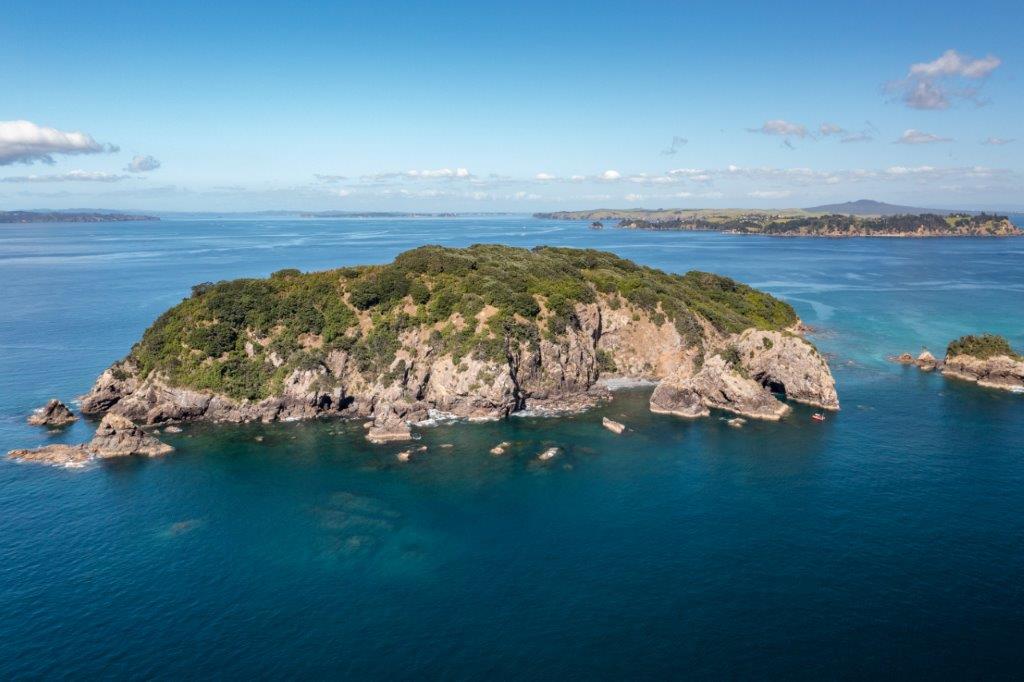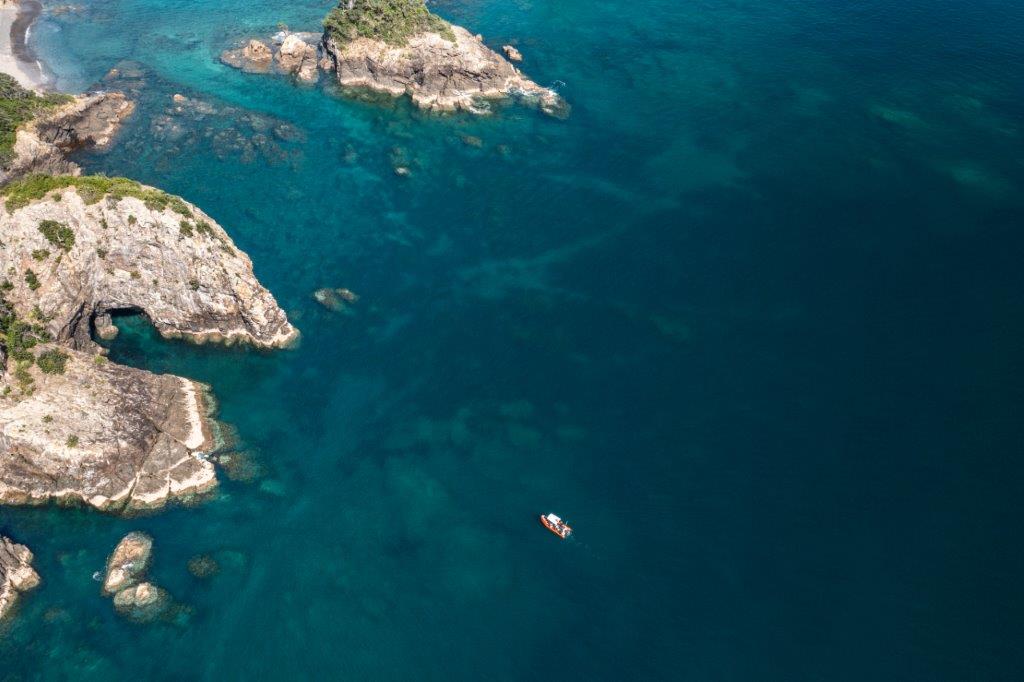The Noises hold a very special interest for seabird lovers. Being home to at least…
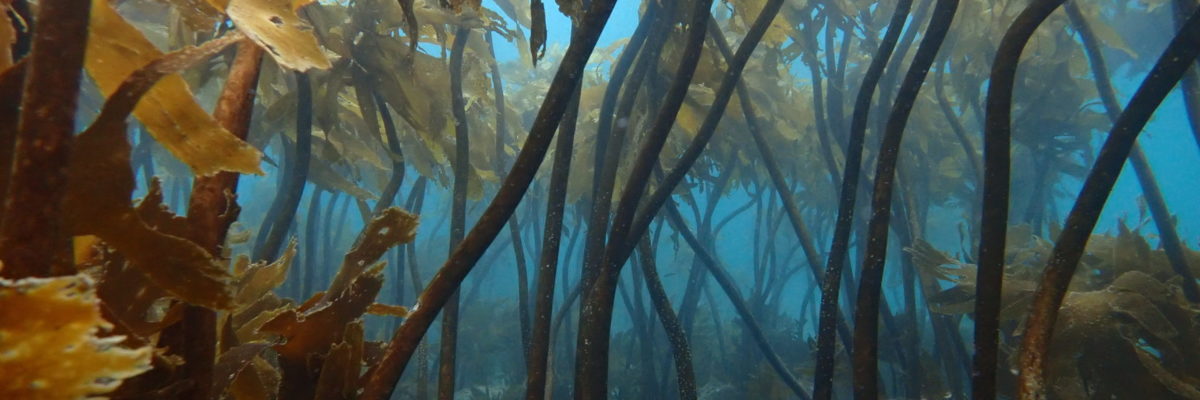
Why kelp needs help
Blue Carbon is something we’re hearing a lot about these days. Referring to the carbon captured by marine and coastal ecosystems, this helps reduce the impact of greenhouse gases. Seagrasses, mangroves, and kelp forests all gather and hold carbon in what’s known as a ‘carbon sink’. These coastal systems may be smaller than our forests on terra firma but they catch carbon at a faster rate than their dry land relatives, playing a vital role in coastal conservation. But, when kelp forests degrade or are damaged due to anthropogenic impacts such as fishing methods that damage the seafloor, the carbon they’re storing can return to the atmosphere and contribute to climate change.
To find out more we spoke to marine ecologist Dr Caitlin Blain, a research fellow at The University of Auckland’s Leigh Marine Lab, about the work she and her colleagues are doing into coastal darkening caused by turbidity, or particles in the water, an issue that not only impacts large and small organisms, but can reduce kelp’s ability to fix and store carbon.
“I wasn’t especially interested in seaweed when I started studying marine science, but I loved scuba diving and being in the ocean and, as my undergraduate studies became a Masters, then a PhD, the more time I spent in the water, the more I loved seeing how ecosystems function. One thing led to another, and I became more interested in seaweed and how it drives ecosystem health,” says Caitlin.
As part of her research, Caitlin has been investigating the impact of turbidity, on the physiological components of kelp, [largely Ecklonia radiata, common kelp or paddle weed], how it photosynthesises and how that process has changed to cope with increasingly low light. Focusing on another aspect of the kelp equation Dr Christine Hansen looked into how kelp responds to stressors and disturbances, and how it grows back after disturbance, in this case being cut down. “We worked together on these two projects across seven study sites including The Mokohinaus, Te Hauturu-O-Toi Little Barrier, Leigh, Rangitoto, Motutaupu and The Noises. We finished that study in 2018 and I’m now doing post-doctoral work with Dr Nick Shears and various colleagues, working on carbon sequestration and how kelp contributes to blue carbon.”
For that initial study, the scientists measured the photosynthetic capacity of kelp using photorespirometry chambers either in the wild or in the lab. This information combined with measurements of underwater light levels at each site allowed them to estimate the productivity of kelp forests across the sites, i.e. how much carbon was being assimilated or fixed by kelp forests at each of these sites on an annual basis.
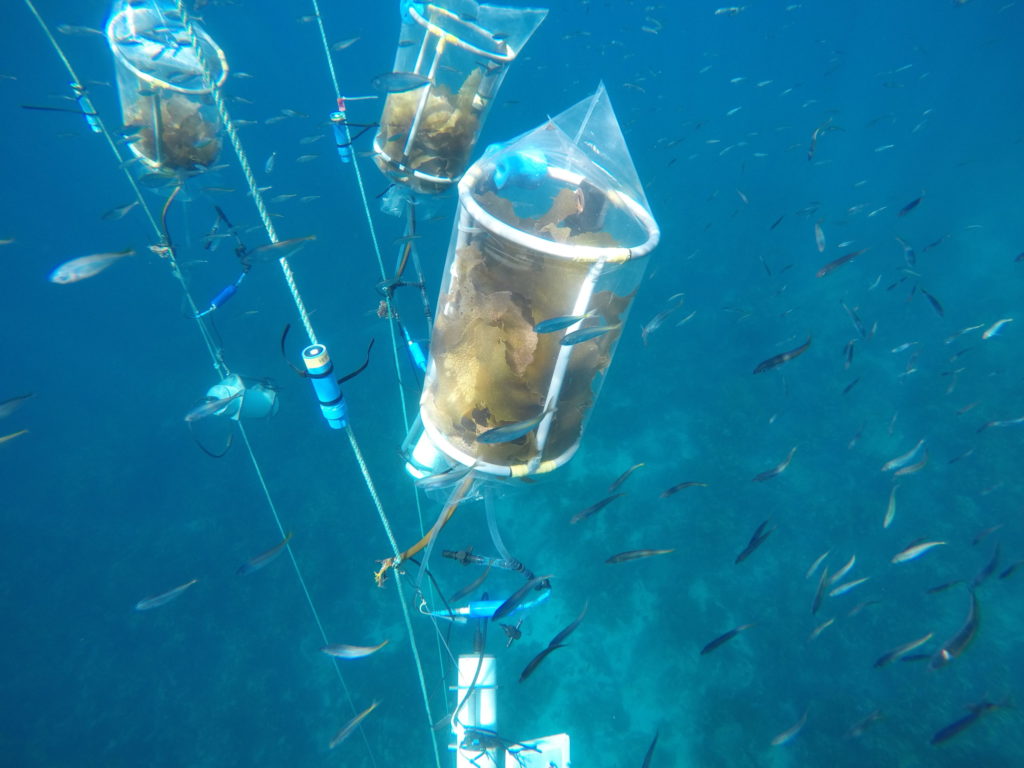
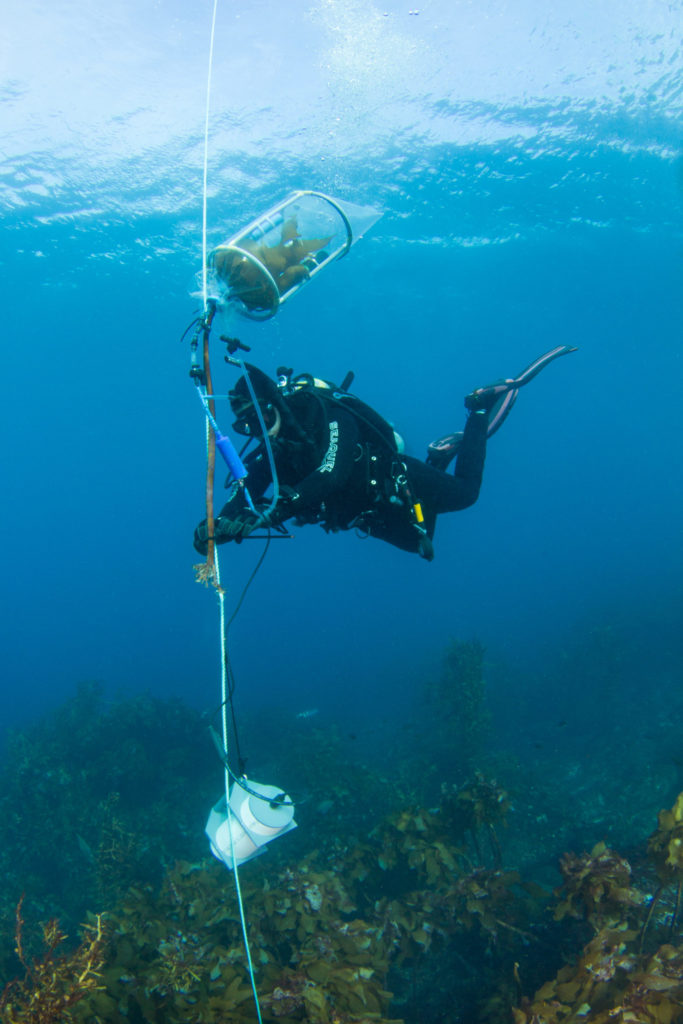
“Kelp forests need light to function just like forests on land, and we discovered big differences across the study sites. Leigh, Little Barrier and The Mokohinau Islands are relatively clear, with a lot of light and there’s some pretty pristine forest in those places. Further into the Gulf, around The Noises, Motutapu and Rangitoto, there’s increased sediment and turbidity and, when particles in the water limit the amount of light that gets to the bottom of the reef, that impacts photosynthesis.”
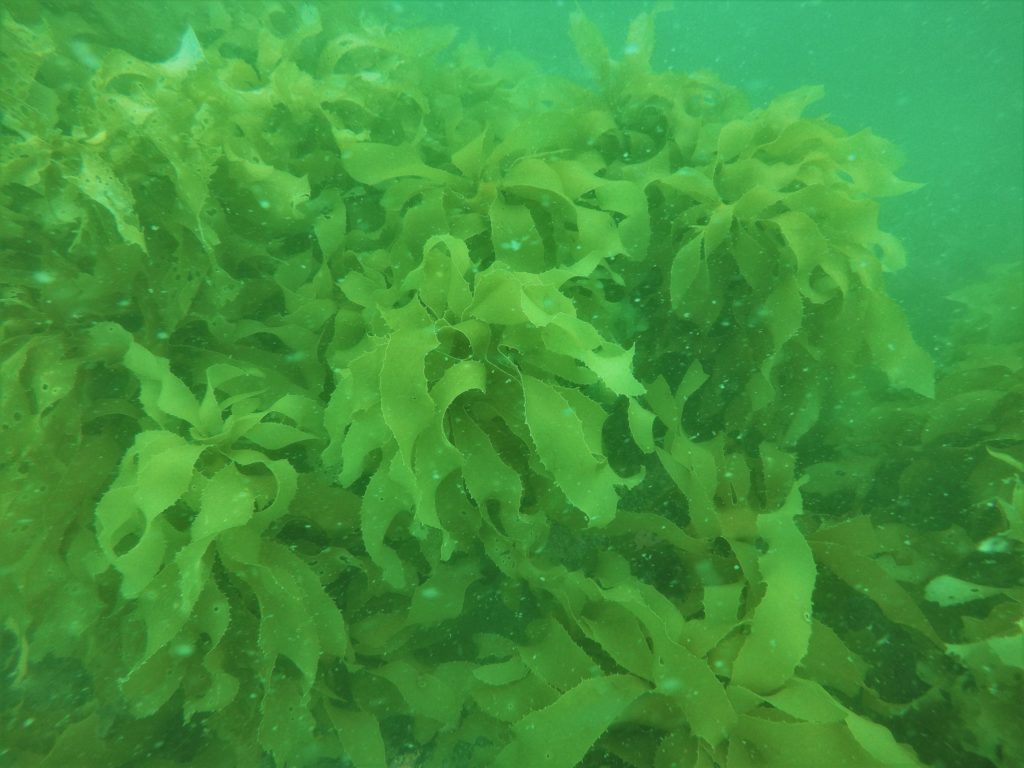
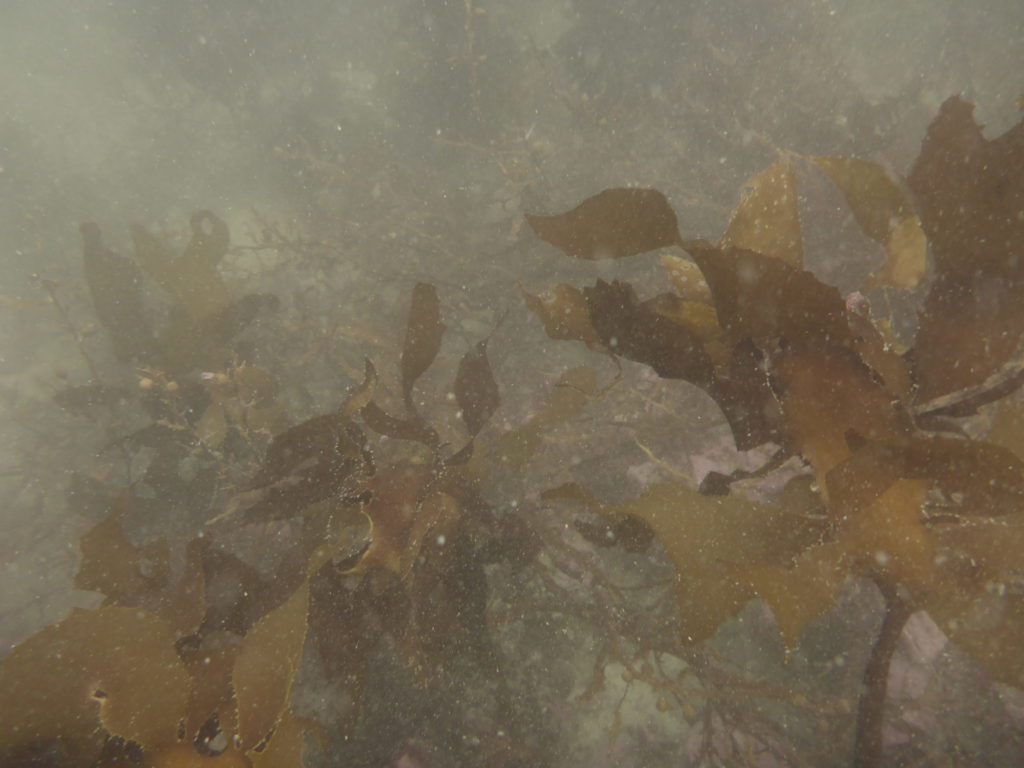
The CO2 -or inorganic carbon- taken in during photosynthesis is converted into organic carbon and either put towards plant growth or released. Unlike trees on land, kelp is like a conveyor belt and, as it grows it also erodes, so what you have in the standing stock of the forest is only a fraction of how much biomass (tissue weight) that forest has produced over the year. Turnover rates can vary, with some kelp fronds being replaced and eroded entirely up to four times in a year. That growth and erosion is important for carbon sequestration and because kelp forests are highly productive ecosystems, there’s a lot of interest in restoring or farming kelp as a means to mitigate CO2 emissions naturally.
“We’re now looking at how some of that carbon is stored and buried, because that’s the carbon that’s valuable to blue carbon initiatives, and it tends to go into soft sediment ecosystems like mudflats, seagrass and mangroves. It also settles in deep-sea basins where a portion is thought to be stored. We have a good idea now about how much carbon is being released by kelp forests, what we don’t know is what happens to the kelp carbon after it is released. Will it make it to a soft sediment habitat where it can be buried? How much of it will be degraded or turned back into CO2 by microbes by the time it gets there? These are some of the questions we need to answer.”
The sites closer to the city are unsurprisingly more turbid with elevated sedimentation due to coastal development and pollution. As for The Noises, due to significant decline in primary kelp production, it’s proving harder to maintain healthy single species canopies and, while kelp forests can and do grow there, they are vulnerable to a range of stressors. This means there is a generally shallowing of kelp forests due to reduced light, but at shallower depths kelp are more vulnerable to grazing by kina, which form kina barrens on many shallow reefs at the Noises.
“I’ve always loved diving at The Noises. There are diverse underwater ecosystems that host huge biodiversity. There are also really cool reef systems that go relatively deep. A lot of the inner Gulf only goes to 11m or 12m but at The Noises they can go to about 21m, so there’s a good base for kelp forest and a lot of potential for productivity, but it also ends up being this locational tipping point.”
Kelp forests at 10m depth in the Hauraki Gulf are typically quite lush with high productivity. “At the Noises there was about a 54% reduction in light reaching the bottom compared to outer Gulf areas with less turbidity. With that 54% light reduction, we saw an approximate 78% reduction in standing stock biomass and an 84% reduction in overall productivity based on photosynthesis. The declines were even more significant at Motutapu and Rangitoto where the water is really turbid.” This ultimately means that kelp forests in the inner Hauraki Gulf have a reduced role in both fixing and storing carbon.
“Christine and I found that The Noises sit at a critical light threshold where kelp forest stability is fragile. At less turbid sites, kelp forests generally thrive, however at The Noises, where turbidity is increased, we noted a significant decline in productivity, depth distribution, recovery from disturbance and the ability to maintain single species canopies.”
Is it possible to reduce turbidity using a collaborative approach? Improving land management practices, and replanting mainland catchments and coastlines would be useful while being aware of the impact of coastal development on sedimentation. In addition, protecting the main predators of kina from fishing would ultimately promote the recovery of kelp forests in shallow water. Yet another ecosystem issue that could be solved, at least in part, if humans simply put less into the ocean and took less out.
These studies are funded in part through the George Mason Centre for the Natural Environment at the University of Auckland.


